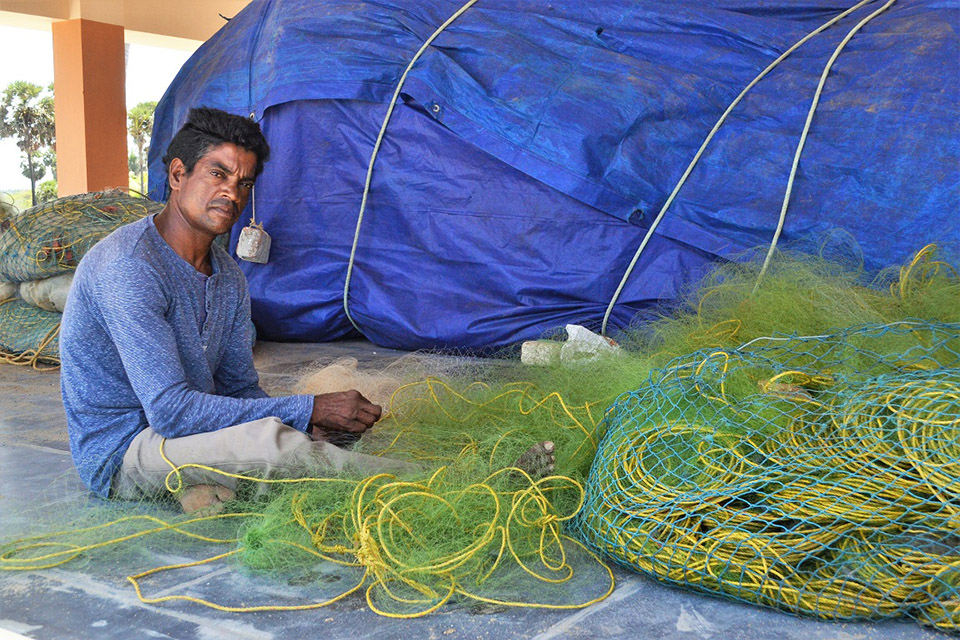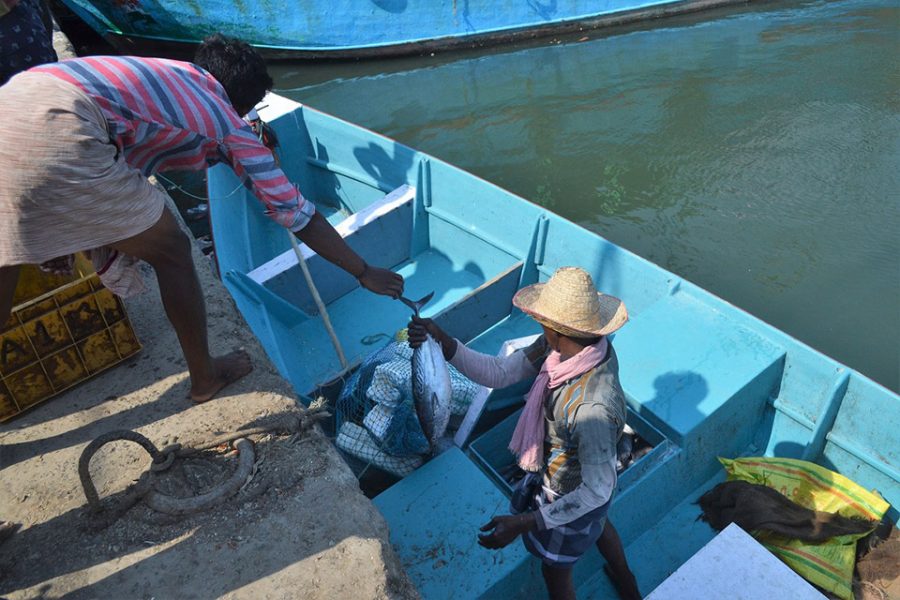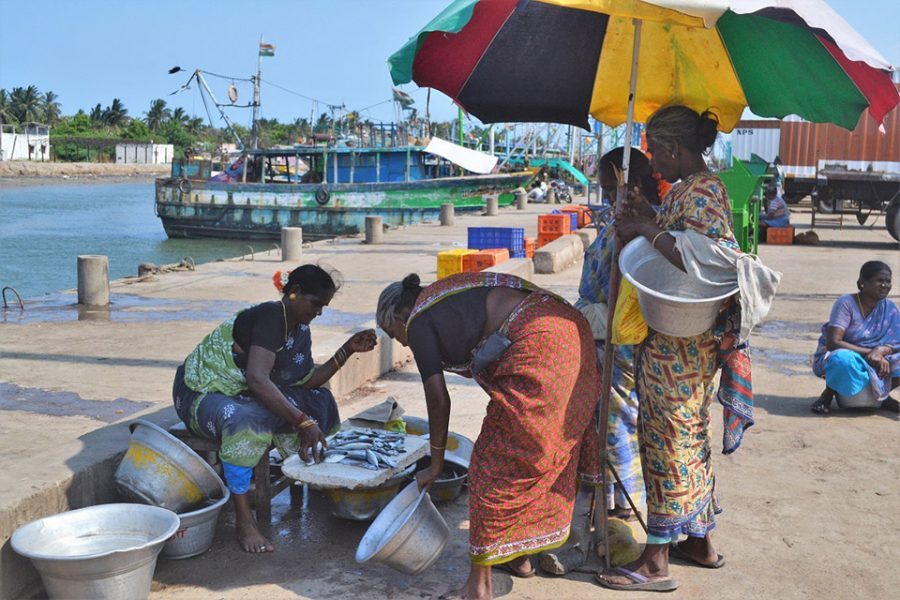
- Home
- News
- Analysis
- States
- Perspective
- Videos
- Education
- Entertainment
- Elections
- World Cup 2023
- Features
- Health
- Business
- Series
- Economy Series
- Earth Day
- Kashmir’s Frozen Turbulence
- India@75
- The legend of Ramjanmabhoomi
- Liberalisation@30
- How to tame a dragon
- Celebrating biodiversity
- Farm Matters
- 50 days of solitude
- Bringing Migrants Home
- Budget 2020
- Jharkhand Votes
- The Federal Investigates
- The Federal Impact
- Vanishing Sand
- Gandhi @ 150
- Andhra Today
- Field report
- Operation Gulmarg
- Pandemic @1 Mn in India
- The Federal Year-End
- The Zero Year
- Premium
- Science
- Brand studio
- Home
- NewsNews
- Analysis
- StatesStates
- PerspectivePerspective
- VideosVideos
- Entertainment
- ElectionsElections
- Sports
- Loading...
Sports - Features
- BusinessBusiness
- Premium
- Loading...
Premium

Tamil Nadu fishermen: Netting plenty, living in poverty

Data can often look strange. For instance, the Central Marine Fisheries Institute (CMFRI) estimates that the export component of the fish catch from Tamil Nadu’s 13 coastal districts fetched a total of nearly ₹30,000 crore as foreign exchange to the country in 2017. This means each fisherman generates ₹25,000 worth of export catch a month, and this doesn’t include the catch sold in...
Data can often look strange. For instance, the Central Marine Fisheries Institute (CMFRI) estimates that the export component of the fish catch from Tamil Nadu’s 13 coastal districts fetched a total of nearly ₹30,000 crore as foreign exchange to the country in 2017. This means each fisherman generates ₹25,000 worth of export catch a month, and this doesn’t include the catch sold in the domestic market.
Yet, in 2010, CMFRI estimated poverty levels of 65% among fishermen. For instance, in Tirunelveli, each fisherman generates more than ₹1 lakh a month of export catch but 40% of the population was below poverty level in 2010. While poverty levels may have decreased in the last eight years, what is clear is that despite producing value and owning the means of production, the average fisherman is severely shortchanged.
In Cuddalore district, each fisherman was generating export catch of ₹18,000 per month but poverty levels were 83%. In the village of Thazhanguda, all the families, some 500 of them, lived below the poverty line.
On the afternoon of April 22 at Thazhanguda, the fishermen were milling around, repairing their nets. Some were sleeping under the summer sun.
- Cuddalore’s fishing woes
- Out of the 42 fishing villages in Cuddalore district, all the fisherfolk families in 30 villages live below poverty line.
- Over 8,700 fisherfolk families in Cuddalore live below poverty line.
- Over 80% of mechanised ringseiners in Tamil Nadu, which are banned in the state, are owned by fisherfolk in Cuddalore district.
So what explains their high poverty?
Monday was the eighth day in the 61-day fishing ban period enforced as per government norms to ensure that the hatchlings get time to grow and produce possible fresh catch. But this means 61 no work-days for the fishermen.
The ban period was increased from 45 days in 2017. “The state government is giving ₹5,000 per month for a fishing family in this ban period. How on earth a family can manage with this meagre amount?” asks Arunachalam, who uses mechanised boats for fishing.
Arunachalam’s condition doesn’t get far better after the ban period. He owns a mechanised boat and a day’s catch can fetch him ₹2,000 to ₹3,000. Sometimes he returns with little or even no catch. Even if he gets nothing, he has to pay for his boat and fuel.
According to the ban period rules, small fishermen who use country boats and non-motorised fibre reinforced plastic (FRP) boats alone can venture into the sea for fishing, since those fishermen can travel only up to three to four nautical miles. “Even those small fishermen are not getting enough fish catch, because every year the fish numbers are dwindling,” he says.
Fishermen here mark out their lives as pre- and post-tsunami, 2004. The say their catch has dipped since the tsunami. They also demand that the ban period should be changed from April-June to September-October since that is the breeding season, in their observation. “But the scientists and the government not taking our traditional knowledge into the account,” says Arunachalam.
While Arunachalam goes on mechanised boats, the overwhelming majority of the fishermen at this village use fibre reinforced plastic boats. Each of these costs ₹2-3 lakh. Many borrow from money-lenders to buy the boats, since the fishermen don’t own land nor house that can be offered as collateral for loans from banks.
It is no coincidence that their moneylender is also the buyer of the catch. They are at his mercy and he gets to fix the price. “There is a good price for fish today. But the fishermen don’t get returns proportionate to their investments because he is in the grip of moneylenders. When the high value catch reaches other countries, it is valued at least 10 times what the fisherman gets, and he has just about enough to eke out a living,” says M Ramajayam, a writer and activist who works with fishermen.
Ramajayam points out that the boats typically last only three to four years and the number of fishing days doesn’t go beyond 200 in a year. This is due to the ban period and disruptions from the monsoon. “Even to maintain the boats we need to borrow from moneylenders. The government could give us subsidy during the ban period to maintain our boats,” says K Masilamani, a fisherman.

Besides the boat, a fisherman should invest in nets too. Many of the Cuddalore mechanised boat fishermen use the ringseiner net — officially banned for its tendency to overfish. A ringseiner boat costs ₹60-80 lakh. Since an individual fisherman cannot bear the whole cost, around 20-30 fishermen families come together and invest. “The ringseiner is officially banned because it pulls out even juvenile fish and eggs from the bottom of the sea. But some of the villages in the district continue to use the ringseiner, which leads to a dip in fish catch,” says Ramajayam.
There is a common perception among small fishermen that only deep sea fishing can help them to get rid of their economic problems. But deep sea fishing has its limitations, says M Ilango, chairperson of National Fishermen Forum.
“A deep sea fishing boat costs around ₹80 lakh to ₹1 crore. The central government gives a subsidy of ₹40 lakh. The state gives ₹16 lakh and the remaining is borne by the fishermen, and that’s a heavy burden. The fisherman involved in deep sea fishing would stay for at least a week in the sea and return. For a trip, it costs ₹4-5 lakh. It is uncertain they can earn a profit,” he says.

Uncertainty leads to distress
V Vivekanandan, former chief executive of the South Indian Federation of Fishermen Societies, says what compounds poverty among fishermen is uncertainty. “In agriculture, one takes up farming in his/her own land. But in fishing, one has to fish in the common resource. There are no borders. There is no limit in terms of fish catch, what kind of species to be caught, what kind of boats should be used, how many fishermen can fish, etc. In fishing, competition is high. But we are not able to manage the competition and that is the main reason we are unable to fix a solution for problems like overfishing,” he says.
Stating fishermen of today are in “genuine distress,” he says that the poverty of fishermen should not be looked only on the basis of income. “The fisherman lives in a state of constant vulnerability. It is this vulnerability and uncertainty that plays a major role in their poverty,” he adds.

